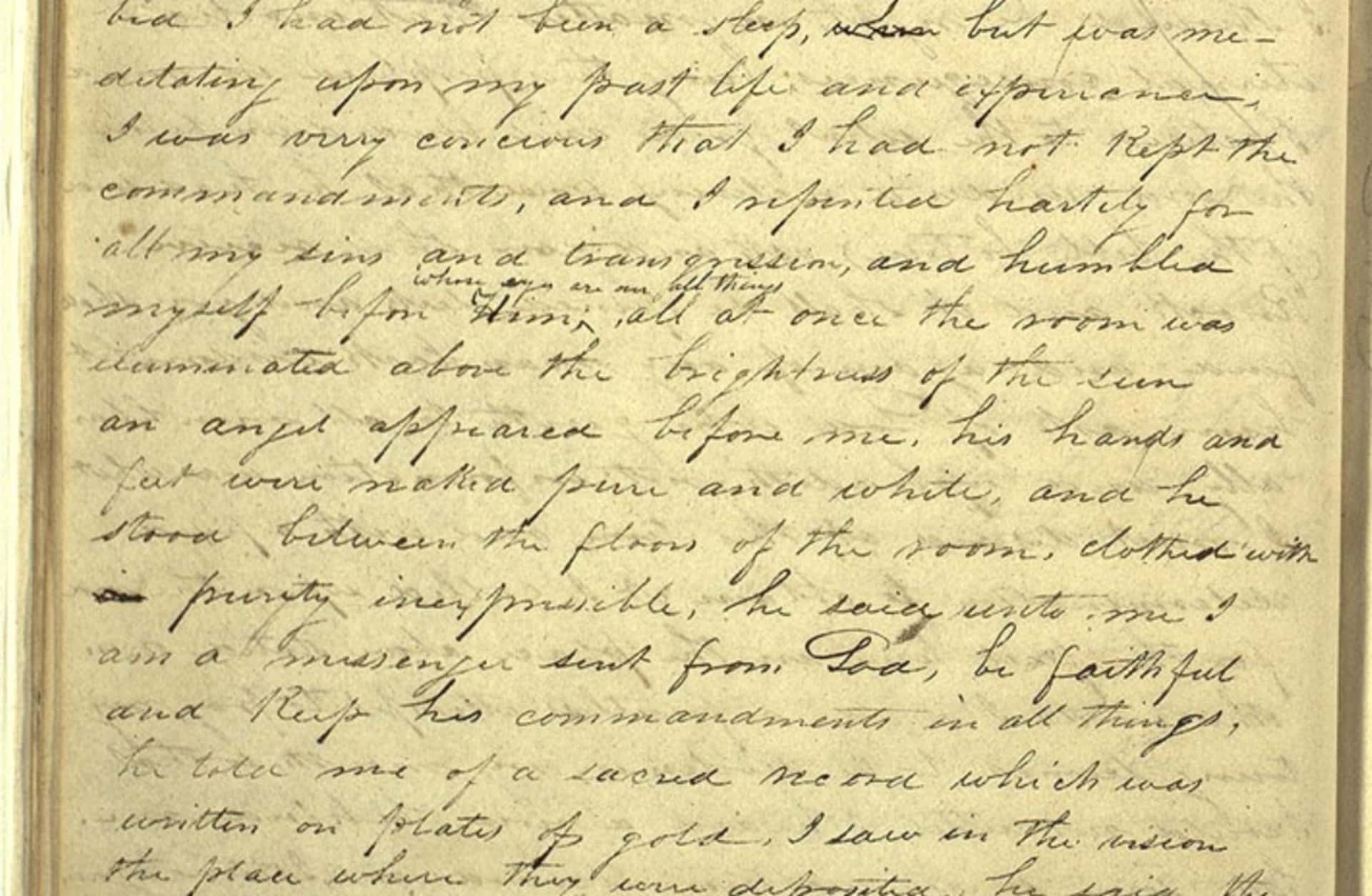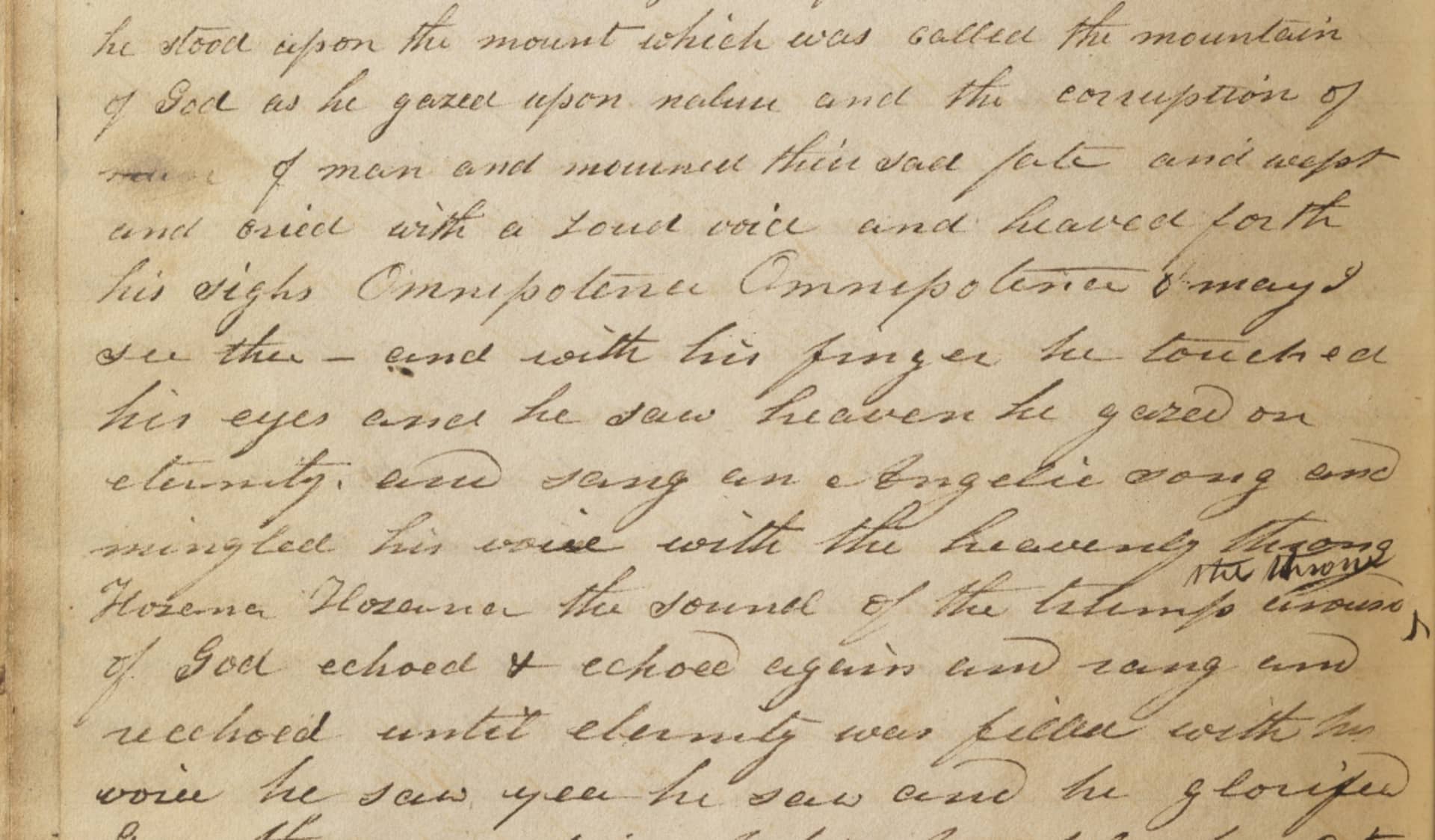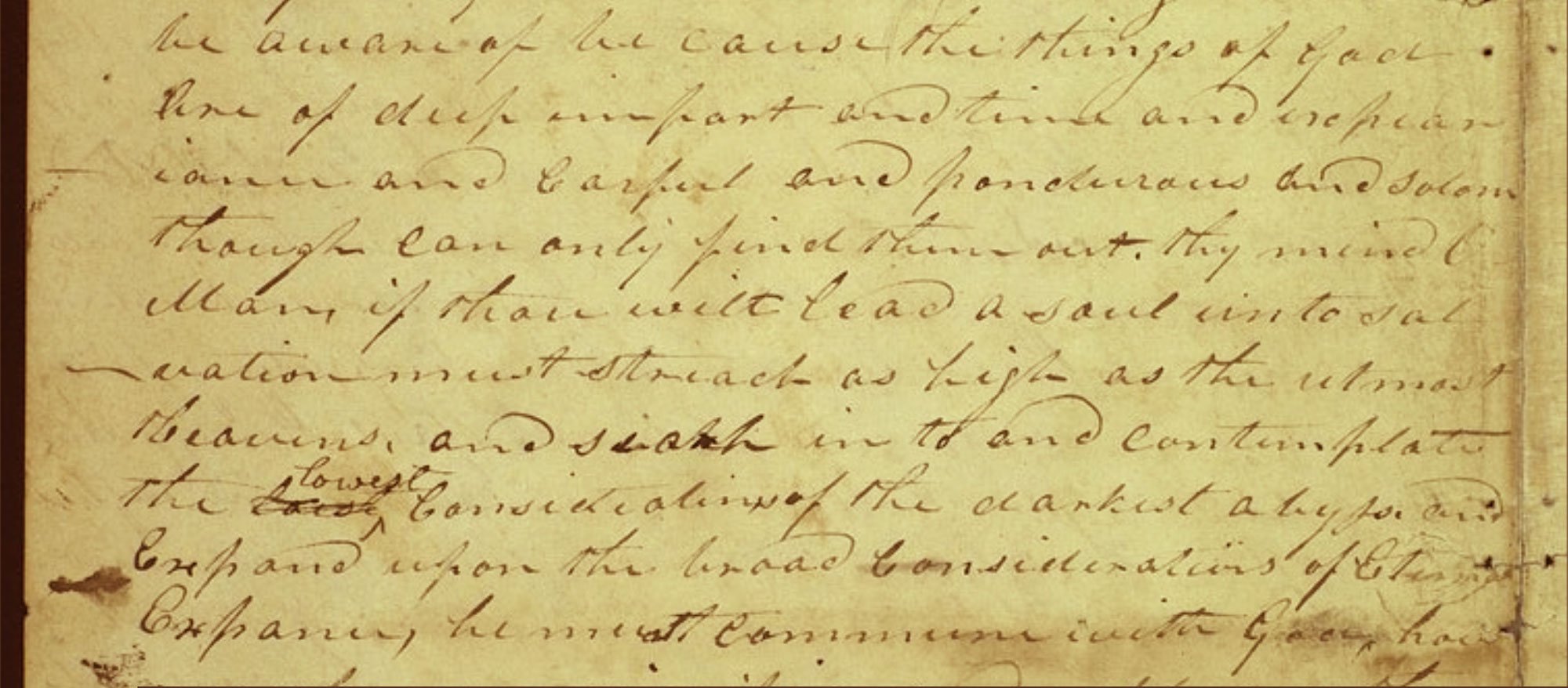Lehi's dream in the Book of Mormon might be an esoteric mystical-allegorical account of Joseph Smith's own First Vision.
Tag: First Vision
God “Pointed”/”Touched” Joseph Smith’s Eyes in the First Vision, Revealing the “Beloved Son” in Him
I suggest that details in the accounts show that Joseph Smith experienced theosis or divinization in the First Vision, realizing his Oneness in God, or Christ living in him.
Joseph Smith’s Mystical Christification in the First Vision
I suggest that Joseph realized Christ in himself in his First Vision, and I think this can be seen in many details in his accounts.
Joseph Smith’s First Vision in the Book of Mormon: The Earliest Accounts?
The earliest known account of First Vision may not be the one in 1832, but many esoteric accounts in April-June 1829, in the Book of Mormon text itself.
The First Vision of Moroni
Was the vision of Moroni unique, or had Joseph experienced something similar before?
Early Secondhand Details about Joseph Smith’s First Vision in 1830-1833?
A late thirdhand account of the First Vision from John Alger in 1893 may be corroborated by some early secondhand (esoteric) references in some songs and hymns recorded in 1833, which may also have connections to a recorded revelation in 1830.
Joseph Smith’s First Vision, BHT: A New Translation
A new translation of Joseph Smith's First Vision.
An Introduction to the BHT Translation of Joseph Smith’s First Vision
I introduce a new translation of Joseph Smith's First Vision, giving some background to this interpretation of his mystical experience, the nature of translation, its pseudepigraphal nature, how it was done, and more.
The Mystical State of Consciousness in Joseph Smith’s First Vision
I suggest that Joseph Smith's earliest direct encounters with God happened in mystical experience, or what is also known as altered states of consciousness.
Reconstructing Joseph Smith’s “First Vision”
Mormonism traces back its history in modern times to its founding prophet, Joseph Smith Jr., and his "First Vision." Joseph was a young farmer boy who lived in western New York, born in the early nineteenth century. This was the time of what's known as the Second Great Awakening, and where Joseph lived is known as the "burned-over district." It was a time of much Protestant religious excitement, revivals, reforms, and the formation of new religious movements and denominations (which eventually included Mormonism). A Restoration Movement grew in popularity in the area, which involved ideas of "restoring" a pure, primitive, uncorrupted, and original form of Christian faith.









